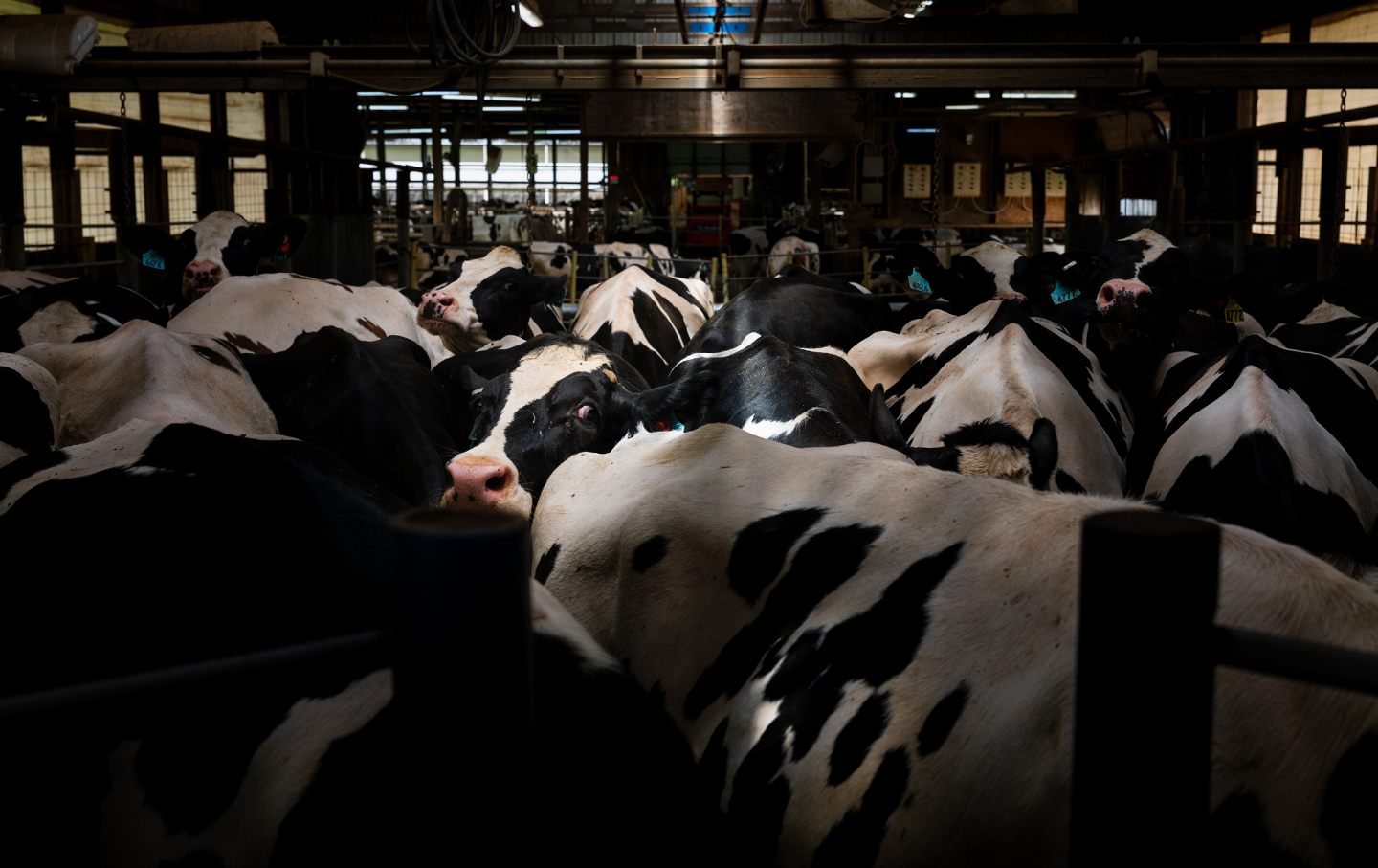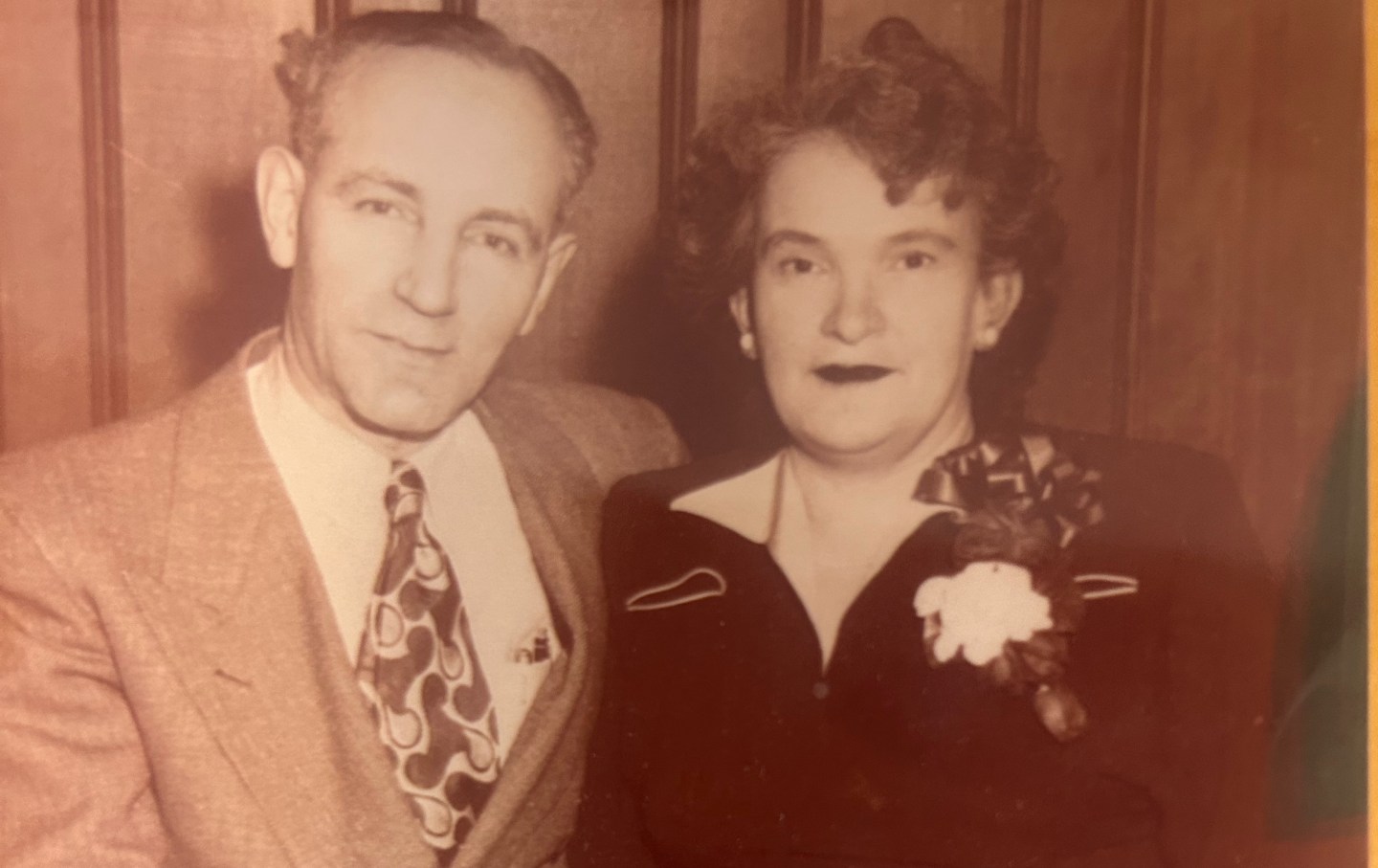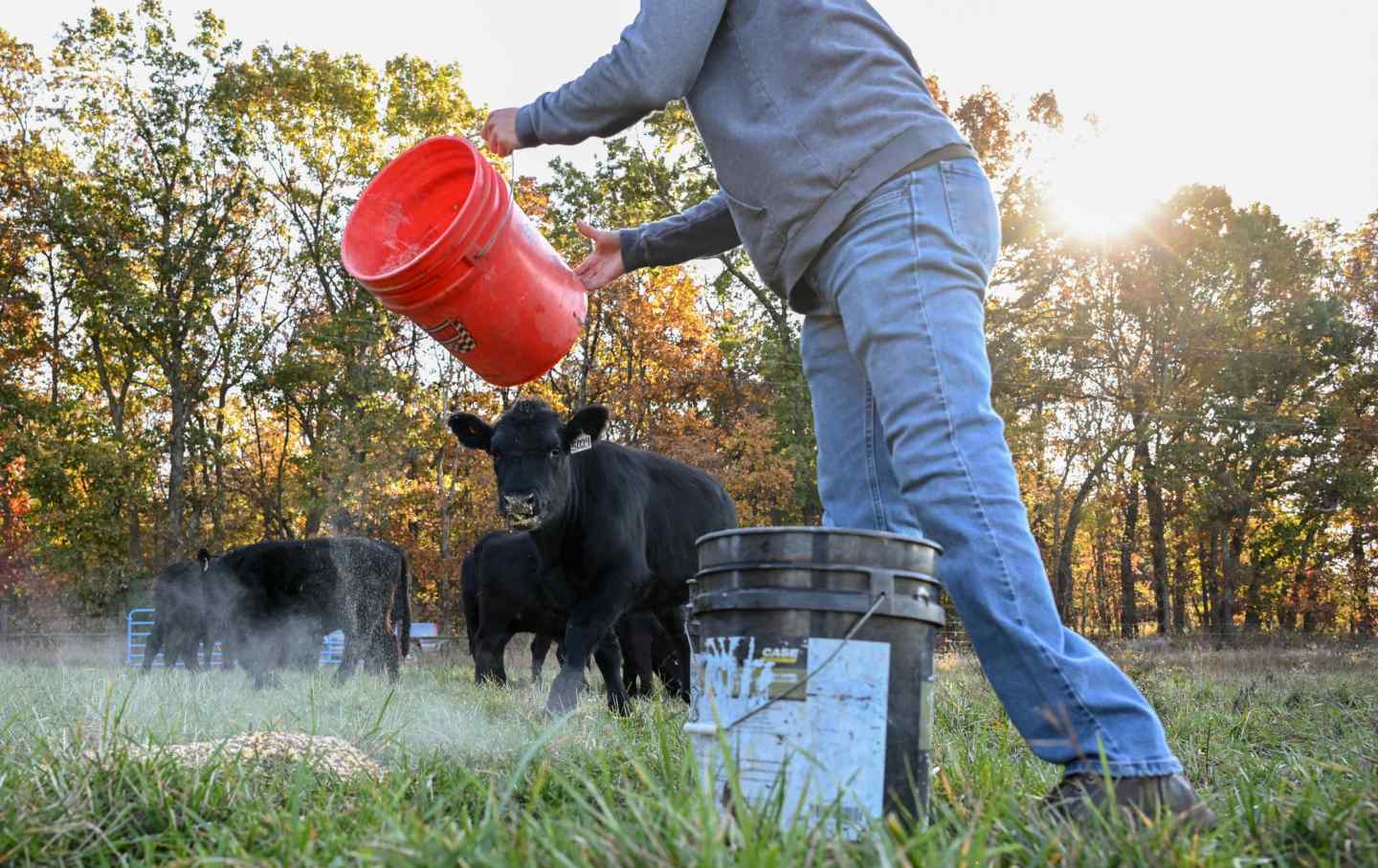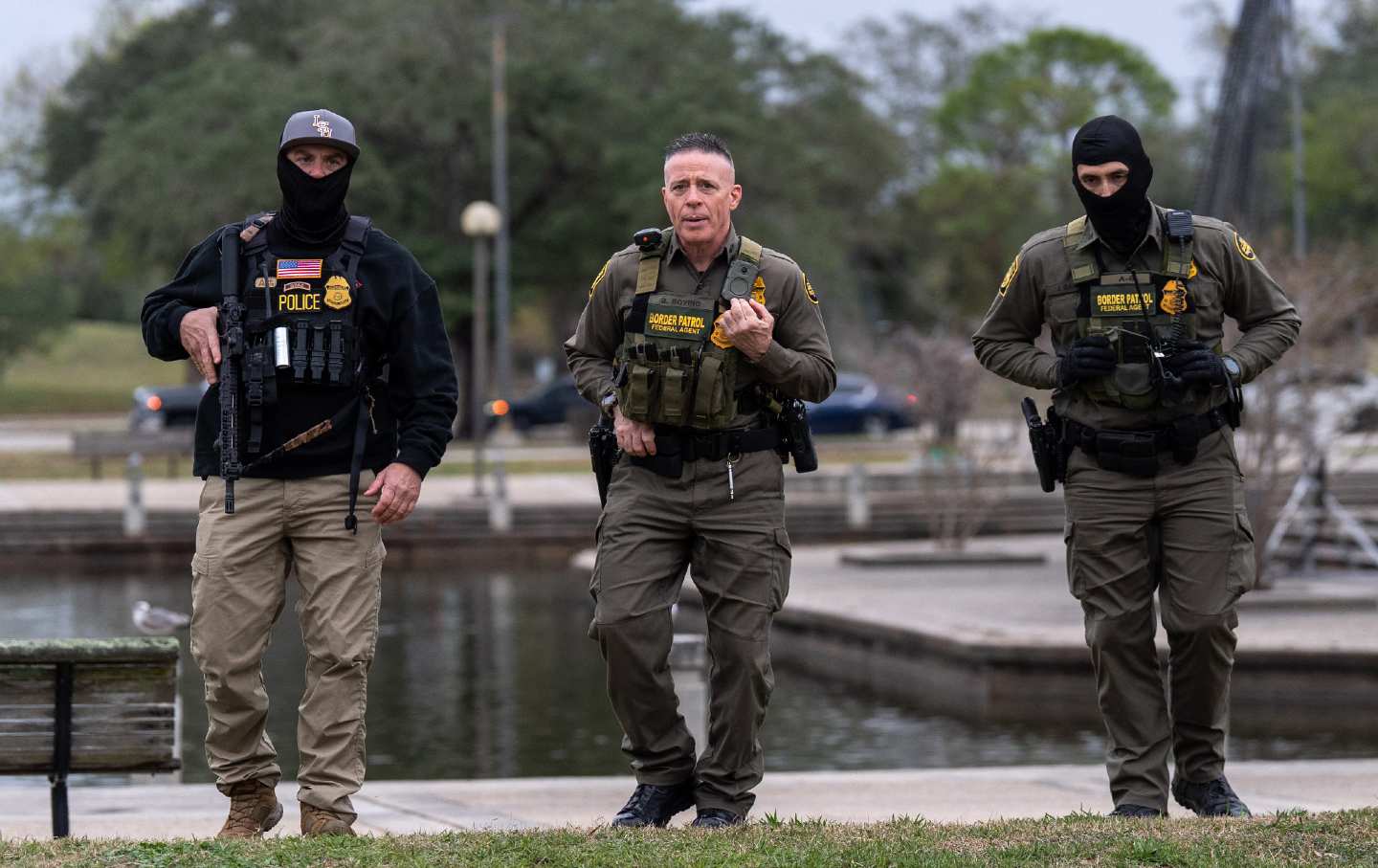We’re Facing a Potential Bird Flu Catastrophe
H5N1 is spreading across the US, targeting some of our most vulnerable communities, and exposing our tattered public health system. We need bold action, and we need it now.

Cows queuing for milking at United Dreams Dairy, in North Freedom, Wisconsin, on May 8, 2024.
(Matthew Ludak / The Washington Post via Getty Images)Whether it was wealthy Londoners fleeing to the countryside to avoid the bubonic plague in the early 17th century or Manhattanites heading for upstate and seaside retreats to do the same to avoid SARS-CoV-2 in the early 21st, urban elites have rarely stuck around for pandemics. As Troy Tassier says in his new book The Rich Flee and the Poor Take the Bus, “the most physical and financial harm from epidemics falls upon the people who are least privileged and most marginalized,” while those with the most resources seek out the best security and safety money can buy.
Yet the notion of rural communities as refuges from disease, then and now, doesn’t match up with reality. Those rich Londoners brought the plague with them to the small villages and hamlets nearby, and, far from their being a safe haven, the mortality rate from Covid was 20 percent higher in rural America than in urban enclaves. This misconception is grounded in a refusal to recognize that, rather than an unspoiled oasis, our rural counties are home to some of our most marginalized populations, from the meat and poultry workers that keep us fed to the upstate prisons where cities lock up those they would rather ignore and forget. The virus raced through these areas, amplifying the pandemic across the landscape with deadly consequences.
Everything that made rural America uniquely vulnerable to Covid-19 still exists. And now, a new threat from a well-known pathogen, influenza, is brewing in America’s rural heartland. An outbreak of H5N1 started months ago and is spreading across dairy farms in the United States. This strain of bird flu looks like it is “well entrenched and has been in cattle for a long time and…probably very, very, very widespread,” as Stat News reported. While there are only two documented human cases thus far, given the poor surveillance effort to date, there are likely other people infected as well.
While this strain of H5N1 has not (yet) acquired the ability to spread through the air or person to person, the virus presents potentially serious health risks to those who work with cattle on dairy operations in rural areas. The vast majority of those working on the front lines are immigrants, many of them undocumented. Anthropologist Thurka Sangaramoorthy has talked about the precarity of the lives of these workers, from not having “rights within the workspace, not having access to good housing or being really scared to speak up when they’re being exploited or when they feel like they’re being discriminated against.”
Agricultural workers also face an increasingly threadbare rural health system that is ill-equipped to respond to their needs. Over the past 30 years, rural America has lost hospitals, primary care providers, and public health infrastructure. Many farmworkers lack insurance and have tenuous connections to healthcare and other services. Without robust health systems and formal safety nets, many farmworkers and their families turn to “Band-Aid care”—as in “Putting Band-Aids on Things That Need Stitches”—rather than care that would help them over the long term.
Now add a new pathogen into the mix. We know the US public health system is weak, social protections are inadequate, and healthcare is tilted towards expensive, tertiary, specialized practices. Rural America is ground zero for this structural, human-made disaster, which makes rural farming communities desperately vulnerable to H5N1. For all the bluster of the current response to H5N1, with the CDC, the FDA, and the USDA all out with their plans to address the virus and its spread, no one is acknowledging that a crisis already existed in these places.
Dealing with this new outbreak will undoubtedly expose the long-standing political failures to address the public health needs of these communities. “Band-Aid” care is no match for H5N1 if it acquires the mutations it needs to transmit efficiently among humans. And if the outbreak takes off in these settings, there is simply no firewall to stop it from making the trip from its rural origins into the rest of the country.
The instinct of those in Atlanta or DC is to deal with the current emergency and ignore the rest—except that is not how the world works. We tried it with Covid in the US, and the fundamental weaknesses in American public health, welfare, and healthcare ensured that we did worse than our G-7 peers in Covid deaths and excess deaths per capita. H5N1 is not (yet) a human epidemic, but the widespread nature of its grip on livestock in rural communities means it gets to bide its time.
As with Covid-19, we are offering false assurances with the ubiquitous refrain of “we have the tools,” suggesting that a technical fix, the mere existence of vaccines, tests, and treatments for influenza, will be our salvation. Yet, we know that this is a vastly insufficient response. We still have the time to address structural issues plaguing rural America, to give those living in rural agricultural counties and the rest of us, a leg up on H5N1, though it’s admittedly a race against the clock and would require a massive investment of resources and political will.
There are signs that President Biden and Congress want to invest in rural America to lift up economic opportunity. But investing in rural health is vital to these economic strategies; they must go hand in hand. There are encouraging moves here as well, but we need something akin to a Marshall Plan for rural America—and there might be bipartisan support for such bold efforts, particularly in health.
Finally, the revival and survival of rural America depends on immigrants—over 70 percent of farmworkers are foreign-born—and so the economic and health initiatives we surely need will be for naught unless we safeguard the future of these workers and their families from xenophobic policies from county seats, state houses and from DC.
H5N1 reminds us that when it comes to infectious diseases, there is no place to hide, no refuge or safety, except what we build together, systems and infrastructures to protect all of us. Perhaps this time around, we’ll do better and chalk up a victory against an old foe.
Disobey authoritarians, support The Nation
Over the past year you’ve read Nation writers like Elie Mystal, Kaveh Akbar, John Nichols, Joan Walsh, Bryce Covert, Dave Zirin, Jeet Heer, Michael T. Klare, Katha Pollitt, Amy Littlefield, Gregg Gonsalves, and Sasha Abramsky take on the Trump family’s corruption, set the record straight about Robert F. Kennedy Jr.’s catastrophic Make America Healthy Again movement, survey the fallout and human cost of the DOGE wrecking ball, anticipate the Supreme Court’s dangerous antidemocratic rulings, and amplify successful tactics of resistance on the streets and in Congress.
We publish these stories because when members of our communities are being abducted, household debt is climbing, and AI data centers are causing water and electricity shortages, we have a duty as journalists to do all we can to inform the public.
In 2026, our aim is to do more than ever before—but we need your support to make that happen.
Through December 31, a generous donor will match all donations up to $75,000. That means that your contribution will be doubled, dollar for dollar. If we hit the full match, we’ll be starting 2026 with $150,000 to invest in the stories that impact real people’s lives—the kinds of stories that billionaire-owned, corporate-backed outlets aren’t covering.
With your support, our team will publish major stories that the president and his allies won’t want you to read. We’ll cover the emerging military-tech industrial complex and matters of war, peace, and surveillance, as well as the affordability crisis, hunger, housing, healthcare, the environment, attacks on reproductive rights, and much more. At the same time, we’ll imagine alternatives to Trumpian rule and uplift efforts to create a better world, here and now.
While your gift has twice the impact, I’m asking you to support The Nation with a donation today. You’ll empower the journalists, editors, and fact-checkers best equipped to hold this authoritarian administration to account.
I hope you won’t miss this moment—donate to The Nation today.
Onward,
Katrina vanden Heuvel
Editor and publisher, The Nation
More from The Nation

The Supreme Court v. My Mother The Supreme Court v. My Mother
After my mother escaped the Holocaust, she broke the law to save her family. Her immigration story is more pertinent today than ever before.

Keeping the Police Out of Pregnancy Care Keeping the Police Out of Pregnancy Care
We must be vigilant in keeping law enforcement out of exam rooms.

White Farmers Are Getting a Taste of Their Own Medicine White Farmers Are Getting a Taste of Their Own Medicine
Trump’s tariffs and immigration raids are driving the latest farm crisis. White farmers have stood by him year after year—and still do.

The Slop of Things to Come The Slop of Things to Come
This past week boasted many overhyped AI breakthroughs, but the healthiest one was the fierce repudiation of a contemptuous McDonald’s ad.

The Stagecraft Behind the New Orleans Immigration Raids The Stagecraft Behind the New Orleans Immigration Raids
In a text exchange, Border Patrol Commander Gregory Bovino calls his operation a “massive disturbance” in the making.

“This Is Historic”: FIFA and UEFA Presidents Are Accused of Aiding Israel’s War Crimes “This Is Historic”: FIFA and UEFA Presidents Are Accused of Aiding Israel’s War Crimes
A coming filing with the ICC accuses FIFA’s Gianni Infantino and UEFA’s Aleksander Čeferin of crimes against humanity for their financial support of settlement clubs.


